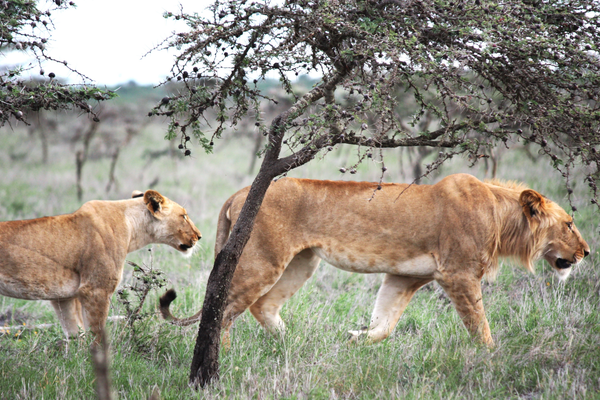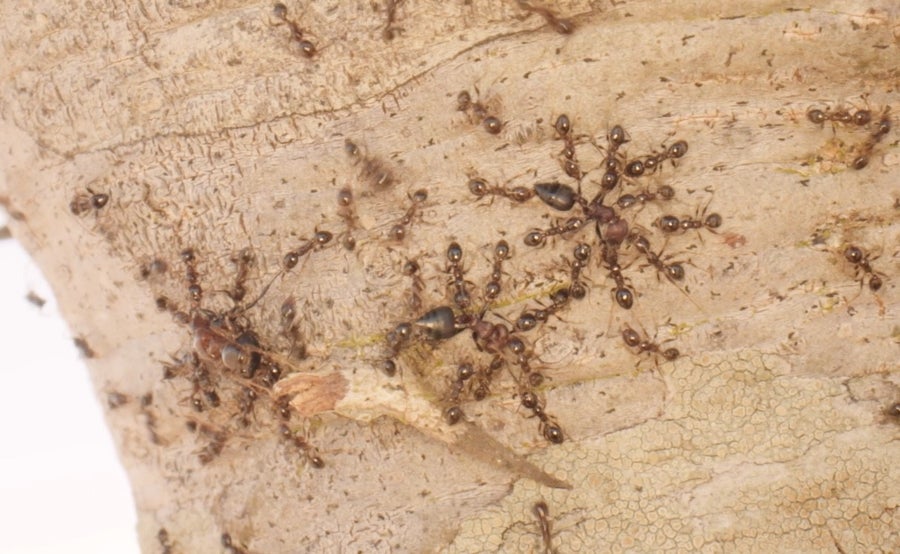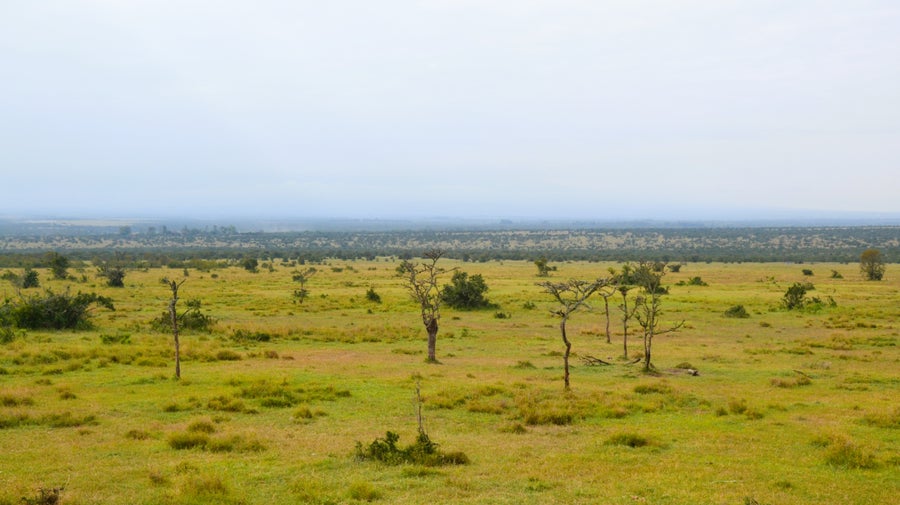Lions Are Changing Their Hunting Strategy because of Ant Invasion

January 25, 2024
4 min read
Big-headed ants are invading new territories in Kenya—and the consequences are rippling through the whole ecosystem, scientists have found

Young female (L) and male lions stalk prey within a “pristine” (uninvaded) savanna. The whistling-thorn trees in the foreground provide cover used by lions to stalk and ambush plains zebra.
The majestic lions of Kenya’s Ol Pejeta Conservancy may never notice the tiny ants that have recently moved into the neighborhood—but the agile predators are feeling the effects because these insects have changed the landscape of the local savanna.
That’s according to new research, published on January 25 in Science, that reveals how a single invasive species of ant, called the big-headed ant (Pheidole megacephala), has impacted plants and animals throughout the ecosystem—all the way up to lions (Panthera leo). These top predators may be nearly 1,000 times larger than the invasive insects, but they’re still feeling the ants’ presence.
“That surprises me, that we can see how these tiny ants can actually cause all these cascading effects within the ecosystem,” says Douglas Kamaru, a Ph.D. student in ecology at the University of Wyoming and a co-author of the new research.
Here’s how that ripple effect happens. First, the big-headed ants outcompete native acacia ants in the genus Crematogaster. These ants have developed a close partnership with the whistling-thorn tree (Vachellia drepanolobium), a common tree in the region’s savannas. The trees feed and house the acacia ants, and in exchange, the ants attack elephants that try to snack on—and sometimes uproot—the trees.

Scientists had already noticed that where big-headed ants had invaded, whistling-thorn trees suffered. And a separate research team had reported that lions were more successful at hunting plains zebras (Equus quagga) when there was more tree cover because the predators hid behind the trees while they waited to ambush the zebras. Kamaru and his colleagues began putting these pieces together and decided to test whether the big-headed ant invasion has impacted lion hunting practices.
It’s an ambitious question, given the many plant and animal species involved. “Ecosystems are complicated,” says Kaitlyn Gaynor, an ecologist at the University of British Columbia, who was not involved in the new research but wrote a commentary about it for the journal. “There’s so much going on all the time, and it can be really hard for us to understand the pathways linking the fate of one species to another.”
Kamaru and his colleagues were able to make the experiment work because the connections involved—between acacia ants and whistling-thorn trees and between tree cover and lion hunting tactics—were so tight and well documented. “This is a case where it is a fairly clear-cut chain of events,” Gaynor says. “It’s rare that things are so neat in nature.”
For their new study, the team used GPS collars to track the movements of six local prides and identify the lions’ hunt sites in Ol Pejeta Conservancy, where the big-headed ant invasion is still in progress. At each site, the scientists measured the local whistling-thorn tree cover, determined whether big-headed ants were present and identified what animal species the lions had caught.
Then the researchers used a computational technique called nested path analysis to pick apart how different factors likely impacted zebra kill rates, confirming that sites invaded by big-headed ants showed a decrease in both tree cover and the zebra kill rates.

Intriguingly, however, the lions may already be adapting to this new environment. The scientists found that even as zebra kill rates fell, local lions were increasingly hunting African buffalo (Syncerus caffer). Lions don’t ambush buffalo the way they do zebras, but the bovids are more challenging prey and require more lions to cooperate on the hunt.
“The good news is that the lion population hasn’t declined since the onset of invasion” of the ants, Kamaru says. “In this kind of a situation, we would expect the lion population to decline, but they didn’t.”
Other ecosystems that are experiencing invasions, including of big-headed ants, may not be as lucky. The species has wreaked havoc in Australia and on islands across the Pacific, including the Hawaiian Islands. Although it’s usually much more difficult to parse the consequences of a novel species moving in, the new research is a sobering reminder of just how tightly woven ecosystems can be—and how much invasive animals can upset an ecosystem’s dynamics.
“These tiny little insects that we might not even see can have such dramatic changes at the landscape level, completely transform the way that a landscape looks and have impact for lions—the king of the savanna,” Gaynor says.
“And it all starts with these tiny, tiny little ants,” she adds. “Don’t overlook the little guys.”





